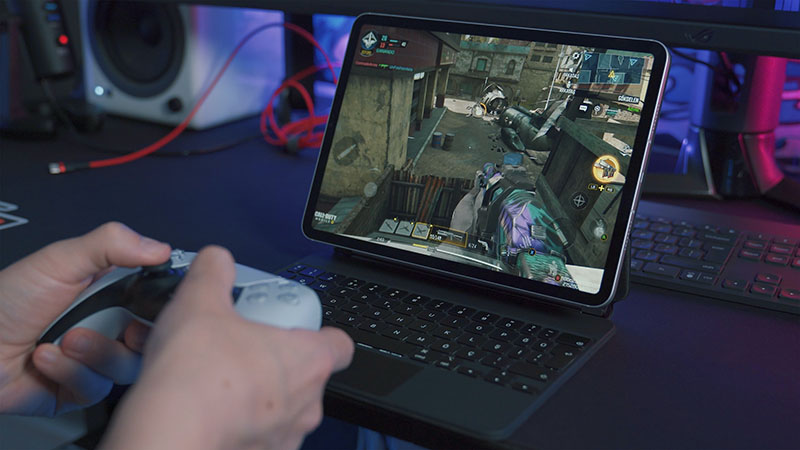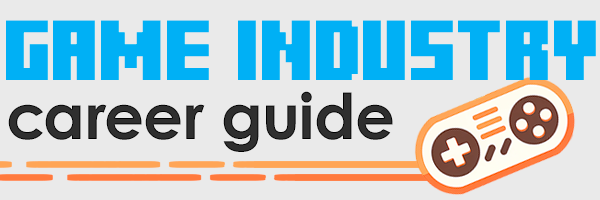How To Become A Video Game Designer

If you’re passionate about video games, you’ve probably wondered what it would be like to design your own. But what is it really like to become a game designer? What does a game designer do all day? What skills and talents does it require, and how can you get started?
To answer these questions and more, we asked professional game designers including: senior game designer Kelly Toyama (Riot Games, Monolith, Wizards of the Coast), multi-talented game designer/artist/programmer Mandi Burley (Glu Mobile, Disney Playdom), senior game designer Kim McAuliffe (Project Spark, SOCOM4), and design director Hal Milton (Marvel: Avengers Alliance, D&D Online, Ultima Online).
Below you’ll find their their unfiltered thoughts on how you can prepare yourself for a game design education. Follow their advice, and one day you just might follow in their footsteps.

What does a Game Designer do every day?
Game design is a highly creative field. It requires a combination of technical skills and artistic vision. From developing interesting characters and stories, to coming up with new game mechanics, game designers shape nearly every part of each game, and in a big way.
Kelly Toyama: I do a little bit of everything. Design is really the go-between with all the disciplines. We have to ride between art, code, and production, driving the product forward.
It’s design’s job to try to have a vision of how the game works, what makes it fun, and to be a leader on the team to guide them towards that goal.
Mandi Burley: I would describe level design as creative and enjoyable. As a level designer, I work on levels (also called maps) in stages. The very first stage is planning the entire game’s set of maps.
In planning, I answer the following questions:
- How many maps will there be total?
- How many art sets will be needed?
- What does the “difficulty curve” look like?
- What special “one off” features will each map need?
- What story beats occur in each map?
This planning step establishes a framework to build in. It’s like mapping out a new neighborhood.
The next step is to plan each map “on paper” (which usually means in Adobe Illustrator). This step is like creating blueprints for each house in the new neighborhood. This is where the designer identifies recurring features that can be recycled across maps and develop standards, such as jump distances and spawn point locations.
These blueprints also allow other members of the team to critique the plan, before too much time or expense goes into coding or making art for a map.
Finally, the maps are built “for real” using standardized 2D or 3D building blocks. Committing to standards is critical, so oftentimes I work with predefined tile pieces to ensure consistency across all maps, placing them roughly in accordance to the planned design. These tile pieces aren’t pretty, just unadorned “boxes”.
Schedule permitting, I am sometimes able to play the map in this “whitebox” form, which lets me find and fix problems before handing the map off to the art team.
While the game artists add props, textures, animated effects, etc, I am busy writing scripted events in a scripting language and hooking them up to nodes within the map. Breakable objects, spawn points, hazard zones, and cutscene triggers are all added.
How can someone start as a career as a Game Designer?
There are many paths to become a game designer. It could be anything from getting a formal education, to getting your first job at a game studio as an intern or a tester, and then working your way up. The education requirements for game design are not standardized, so different people tend to find their own way into the field.
Toyama: Long story short? Lots of luck, and lots of trying.
I started in QA (quality assurance) but design has always been my passion. Game design is a funny thing: Just because you have the title doesn’t mean you can do it, and not having the title shouldn’t stop you.
The thing that served me best is that I have been making games since I was five years old. Card games, board games, DMing homebrew RPGs. No one is going to give you permission to be a great designer, you have to go out and take it. You don’t need anything but a pen and paper to get started.
Burley: I personally came into level design from an artist role. At my first job, level designer and level artist were the same role, so I would design the level and then create the art for it. At my second job, those roles were separated, and I landed on the “designer” side.
Level designer is one of the most common “new designer” responsibilities, but doing a good job as a level designer requires a strong sense of space, pacing, and composition.Designers without a knack for it are quickly moved out of level design.
What are the best parts of being a Game Designer?
Like any job, Game Design has its pros and cons. But for those who work in the field, there’s nothing like working as part of a development team to create something entirely new that players will love.
Toyama: The best part is the collaboration. Making games is a team sport and being a good designer is about recognizing good ideas, not necessarily having them yourself. Working with a team of talented people to make fun, elegant games is the best part by far.
Being a good designer is about recognizing good ideas, not necessarily having them yourself.
Burley: My favorite part of level design is building a world and running around in it. It’s very rewarding to create a space, explore it, and then improve it. I also love finding the right place to surprise the player with a scripted story sequence.
What are some downsides of being a Game Designer?
Toyama: My least favorite part, is time. I’ve never made a game that I didn’t think I could have made better with 6 more months of time. But at some point you need to call all projects finished, and push them out to the world. But that part, the letting go, is the hardest part.
Burley: My least favorite part is a scheduling gripe. Compressed schedules oftentimes mean the level “white boxes” are built and handed off to artists before the code allowing for playtesting is written. It is very difficult to modify an “art complete” level without incurring additional development expense, so it’s quite scary to hand an untested level off for final art.
On projects where this happens and I can’t play the levels until later, I find things that could have been done better and feel bad that there was no time to find and fix them before they were “frozen” by art.
What’s surprising about being a Game Designer?
Toyama: I think design is mis-understood generally. We don’t code, we don’t draw things. Design is a lot like doing sound work in theater (a thing I did in high school), the only time it gets noticed is when it’s done wrong. When it’s done right, it’s so seamless that it should look like you are doing nothing at all.
Burley: There’s quite a bit of planning and standardization involved, and yet, it’s mostly an intuitive and artistic process that can’t be boiled down into a formula. I think to some people on the outside it looks like playing a game, since so much of the testing process is playing it, but it’s also about thinking critically about your own work.
What talents and personality does it take to be a Game Designer?
Toyama: Passion and teamwork are the things that get the job done. The best games are made when the whole team believes in it and understands the idea. If you find yourself at a point where you are dictating or mandating, then you have lost the thread of the design process. You are the visionary, but that means gathering together the vision of the team, not forcing your own vision down their throats.
Burley: So many – persistence, empathy, and humility come to mind.
Crafting an experience requires critically looking at your own work and improving it. You have to step into the role of a new player over and over again, even as you yourself become very familiar with the level you’re building.
A level designer must be receptive to feedback from play testers who veered off the map’s “designed” path. Players are good at doing the opposite of what you intended, and you’ll be reworking your level when all of them keep getting stuck in the same way.
Be interested in everything – a designer doesn’t get the privilege of not liking things. If you only enjoy one genre of media, then you won’t be able to design outside of that box.
What are some good steps to start learning game design?
Toyama: In a more practical sense, if you’re looking for video game design work then look into statistics, programming and art classes. These will help, as the more you understand what the other disciplines are doing the better you are going to be at forging them together.
Go make a game. You don’t need a programmer, you don’t need an artist, just yourself and some paper and you can start designing.
Lastly, writing and public speaking are your friends. You’re going to be doing a lot of communicating. If you’re intimidated by standing in front of a room and going though your ideas, or getting your ideas down on paper, you will have a hard time being a successful designer.
Burley: Learn a mainstream 3D modeling package. Build environments in 3DS Max or Maya – if you love it, great. If you hate it (and a lot of people do) at least then you know level design isn’t for you. Intro to 3D Modeling is the weeder course. Even the 2D titles I worked on were made using assets created in 3D. It’s everywhere!
Strongly reconsider your desire to become a level designer if you’re not at all artistic, because level design is an art. You’ll basically be building environments, even if you aren’t the person putting the decorative touches and lighting in.
If level design is the right path for you, showcase your talent with a portfolio that includes at least two or three very different level designs.
Include renders from the player’s perspective as well as from outside the level, showing its layout. Label story moments, breakable props, hazards, whatever’s important. Imagine this level you built is being given to someone else to put into the game, and include everything you’d want that person to know.
McAuliffe: I recommend that aspiring designers read as much as they can, in addition to reading game design books. Watch movies – dig into the classics, so that you get the cultural references.
Stay current with what’s trending in the industry. Follow your industry idols on Twitter. See what they’re talking about, and what games they’re playing.
Obviously, play games of all kinds, and decide what does and doesn’t work well in each one. But also experience life as much as possible and take note of the “design” that’s all around you – good and bad.
Milton: Ultimately, I advise folks to start playing and making. This could be playing with and learning the basics with a tool like Project Spark, creating simple content with a tool like Game Salad, diving into Unity 3D and working through sample projects, or engaging the Steam Workshop to create content for any of your favorite games that support it.
There are robust online communities for all of those examples that will provide support, should you need it. By creating, you’ll learn far faster what it means to realize an experience from concept to tangible content. Also, you’ll learn that there is work involved – unavoidably hard, tedious, frustrating, nerve-shredding, yet unbelievably joyful work.
Any parting advice for aspiring Game Designers?
Toyama: Start! Like I said, nothing should stop you from doing design right now. Go make a game. You don’t need a programmer, you don’t need an artist, you just need yourself and some paper and you can start designing.
Design is something that is best learned by practice. So get out there and start doing it.
Burley: Play games – games are the best education if you’re thinking critically as you play. Working for a commercial developer, the levels you design will need to “speak the same language” as other games, and the more of this “language” you know, the better.
Play a mix of old and new, and play outside your preferred game genres once in a while. My early titles as a level designer were 2D adventure games, but I later worked on several 3D titles. Be familiar with the conventions of both – you never know what you’ll be making next in this fast-paced industry.
A game designer is an experience designer, so study life experiences. Try new things and go new places and pay attention to the experience. What did the “designers” choose to “hide” from you and why? What kind of experience do you think they wanted you to have? If there’s a learning curve, is it well explained or is it confusing? Internalize it all, and you’ll be ahead of most designers.
Image: onur-binay/Unsplash
Read my new book!
Making games for a living is an incredibly rewarding career, but it’s hard to break in unless you have insider knowledge. This book levels the playing field.


I’ve wanted to become a video game designer for awhile but I also wanted to be able to do everything else like coding and programming. How hard ( or if possible at all ) would it be to do that?
Hi Michael! It’s tempting to want to do everything yourself. But making a game is a LOT of work – usually way too much for one person alone – so it’s best to be part of a team. Each person on your team can have a different specialty: designer, artist, programmer, and so on.
If you’re in school and just starting to think about your career, I’d recommend that you take some programming classes and some creative writing classes. Both of those will help you with a future career as a game designer.
Holy shiitake mushrooms!!! I didn’t know that entry-level was that high!!Now I know what career path I’m taking!!make game+friends+money=:)me
So I have been wanting to be in the gaming industry for a while now but am a bit confused. What part of the game do designers work on and/or do they do a bit of everything?
Hi Garron, game designers need to understand a lot about most everything, but there are definitely some specific tasks that they do. Check out this overview of a game designer’s job. Also a good interview with a professional game designer and also a level designer.
ive always wanted to be a game designer , i really like the that you can get that much money for doing something you like im glad that i want game design as my career. by the way im 16 and a junior next year im going get a ultrabook specifacally for game design this post helped me alot. Thank You
I’m glad this was helpful for you. Best of luck with your career in games!
I really liked this post and great pointers, which in my opinion, stand for truth. Something I would like to talk about:
I’ve been designing games for some time now, having ideas flowing and I’m ejoying it. What I’m struggling with, how to go forward? How to get you noticed by people in the industry?
Is a portfolio good, if it is filled with game concepts with Design Documents available? Tips and advice?
Thanks!
Many people have game design ideas, so you might need more than just Design Documents when you apply for jobs. Companies like to hire people that have proven they can do the work: designing levels, or tuning/balancing game systems for example. For a game designer, I recommend that you make some game mods to show that you can do those things.
Hey! I have been always worried about which degree to take and how demanding the job for game designing is. I have taken computer science and creative writing in my high school and now about to go to college.
I heard that many people seem to try to apply to the job and many end up not getting the job but that is only word-to-mouth source. Do you think that if I apply to game and simulation degree will help me reach my dream job?
Also, will being an Eagle Scout also give me an advantage?
Hi Robert, it’s good that you’ve taken computer science and creative writing in school, it will help in your career. It’s true that many people want to become game designers, it is a competitive field. I believe that getting a game and simulation degree will help you, because you’ll learn a lot and you’ll build a portfolio that proves to employers that you can do the work. Best of luck!
Hey Jason,
I am an aspiring game designer/programmer and was wondering what type of university course would be the best choice for :
1) Standing out and getting a job as a game designer
2) Still getting a job in computing if no game design jobs are currently available
Thanks for any reply, and btw, this website has been the most resourceful out of any I have currently found, THANK YOU!!
Hi Emil, if you want to do a degree program that has a good chance of getting a job if a game career doesn’t work out, then I’d recommend a program that has a heavy computer science component to it – as opposed to a “game design” focused program. Once you become a strong programmer, you should be able to work in games or many other fields that require programmers.
how can i start mt career when im 12 years old
Hi Eddie, 12 years old is the perfect age to start learning game development. You can learn on your own for fun, on the weekends or after school (after you do homework). This article will help you get started: Make your first video game today.
Hi!
I’m speak English so bad and I’m so sorry. I’m 17 years old and want to be a game designer, but I don’t like programming. A lot of people say, that I must learn programming and scripting, but I don’t like it, what I must do? I love video games, I really wanna be a designer, make games, but don’t like programming.
Programming and scripting are similar, but scripting is much easier to learn and use. Even if you don’t like programming, I think you’ll like scripting once you discover how powerful it is for helping you make your game designs. You should try to learn it because many game companies require it of their game designers.
Hi! I am an aspiring Game Designer, and currently learning to develop Games.
What should I do for my portfolio, if I’m applying for the job of a Game designer?
Which different things should i include in my portfolio?
Hi Rugved, there’s no rules for what to put in a game design portfolio. You could include any game-related things you’ve created such as stories, game mods, level design sketches, small games you’ve created, and scripts you’ve written. Check out this article about game designer requirements, it will point you in the right direction.
What do you suggest to do who is in high school and interested to be a part of the game industry, specifically game design?
-I’m taking computer science and some honor math classes but no experiences in the art field (besides music). Will this affect me in the long run or will it be gradually more introduced once I go to college?
-What colleges should I look for exactly for this career path?
Hi Jandrey, it’s great that you’re taking CS and math classes, those will be really helpful for game design. Take some art classes if art interests you, but otherwise it’s not as important for game design. I recommend you read the article, Game Designer Education Requirements for some more insight into your question. I can’t specifically recommend a college for you, because it depends on your personal preferences, financial situation, location in the world, etc. Just be sure to evaluate several colleges before making a decision. This article will help you, Which University is Best for Game Design?